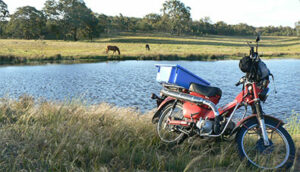Read the latest information on
Foot-and-mouth disease
Hay cutting and harvesting season has started and it’s crucial you understand the implications this has in relation to your farm. One of the common ways harmful pests, weeds and disease can be introduced on a farm is through hasty and improper cleaning procedures of people, vehicles, and equipment before entry or re-entry to the property.
 Below are three areas to pay attention to and some protocols you can introduce for each.
Below are three areas to pay attention to and some protocols you can introduce for each.
People means anyone visiting your property including suppliers, vets, transporters, stock agents, consultants, itinerant workers, researchers and contractors. It also includes guests, and anyone who lives on the property. People can carry disease and/or pests onto your farm via their clothes, boots, hair, skin, and more.
Vehicles means any vehicle entering your property, from sedans through to tractors and transport trucks. These can carry harmful pests via plant material, soil or manure, which can be stuck on/in vehicle tyres, undercarriages, grills, floors and trays.
Equipment means storage containers, tools, feeding equipment, personal protective equipment, and any other items used on the farm. These items can pose a risk when not cleaned thoroughly before and/or after use.
To limit the risk of harmful seeds, pests, and disease being carried onto your property:
No system is perfect, but following the steps above, as well as those listed in more detail at https://www.farmbiosecurity.com.au/essentials-toolkit/people-vehicles-equipment/ will help you minimise pests, seeds, and disease being brought onto your farm.